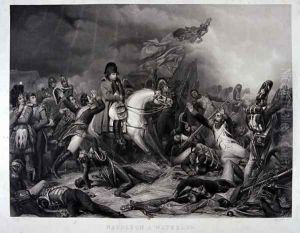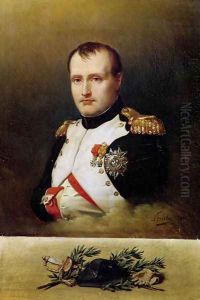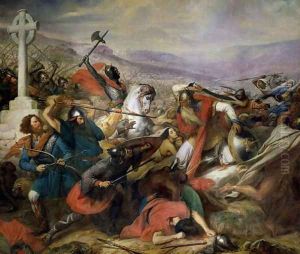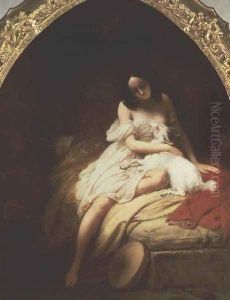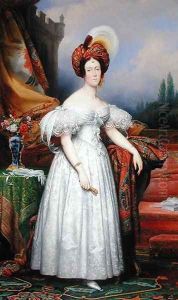Charles Auguste Steuben Paintings
Charles Auguste Steuben, born Carl August Steinheil in Bayreuth, Germany, on April 18, 1788, was a distinguished German-French painter known for his historical and military scenes. Steuben's artistic journey began under the guidance of his uncle, the director of the Ducal Saxe-Weimar's drawing academy, where he first nurtured his talents. His quest for artistic mastery led him to Paris, a vibrant hub for artists from across Europe. In Paris, Steuben found himself under the tutelage of François Gérard, a prominent French painter whose influence was instrumental in shaping Steuben's style and career.
Steuben's work quickly garnered attention for its vivid portrayal of historical events and figures, earning him a reputable position among the European artistic elite. One of his most celebrated works, 'The Battle of Waterloo,' epitomizes his ability to capture the dynamism and drama of historical moments. His paintings were not only praised for their technical proficiency but also for their emotional depth and ability to convey the spirit of the age.
Throughout the Napoleonic wars and the Restoration period, Steuben remained actively involved in the French art scene, contributing to the romanticism movement that swept through Europe in the early 19th century. His works during this period reflected a romantic fascination with heroism and valor, traits that were highly prized in the tumultuous political landscape of the time.
Despite facing competition from a new generation of artists in the latter part of his career, Steuben continued to receive commissions and accolades for his work. He was awarded the Legion of Honour, France's highest order of merit for military and civil merits, in recognition of his contributions to French art and culture.
Charles Auguste Steuben's legacy is preserved in his contributions to the romantic movement and his masterful depiction of historical and military scenes. His works remain a testament to the era's artistic and cultural dynamism, bridging the gap between neoclassicism and romanticism. Steuben passed away in Paris on September 21, 1856, leaving behind a body of work that continues to be celebrated for its historical significance and artistic merit.
